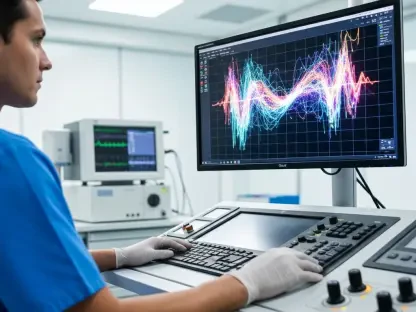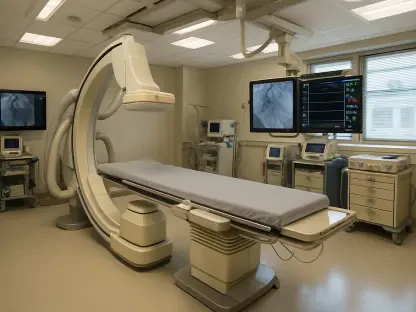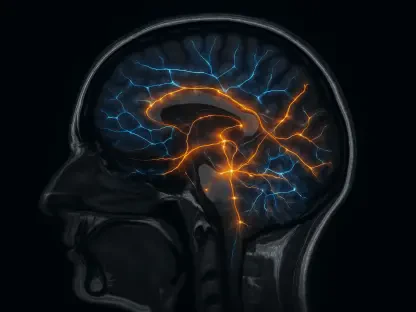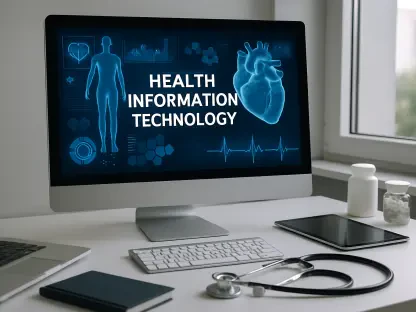The healthcare industry is on the brink of a significant transformation, driven by the advent of wearable biosensors. Among these, nanoparticle-based sensors are emerging as a groundbreaking technology, promising to revolutionize continuous health monitoring. This article explores the potential of these advanced biosensors, their technological underpinnings, and their implications for the future of healthcare.
Wearable biosensors have been gaining traction for their ability to provide continuous, non-invasive monitoring of vital health parameters. These devices are designed to track a range of biomarkers, offering real-time data that can be crucial for early diagnosis and effective management of various health conditions. The integration of nanoparticle technology into these sensors marks a significant leap forward, enhancing their accuracy, sensitivity, and overall performance.
The Evolution of Wearable Biosensors
Wearable biosensors have evolved significantly over the past decade, transitioning from simple fitness trackers to sophisticated medical devices. Early iterations of these sensors were primarily focused on tracking physical activity and basic health metrics such as heart rate and sleep patterns. However, advancements in sensor technology have expanded their capabilities, enabling the monitoring of more complex biomarkers. The shift towards more advanced biosensors has been driven by the growing demand for personalized healthcare. Patients and healthcare providers alike are recognizing the value of continuous health monitoring, which can provide insights into an individual’s health status and help in the early detection of potential issues. This trend is further supported by the increasing prevalence of chronic diseases, which require ongoing management and monitoring.
An important aspect of this evolution is the integration of advanced technologies like artificial intelligence and machine learning. These technologies enable biosensors to analyze vast amounts of data, offering predictive insights and personalized health recommendations. The ability to continuously monitor and analyze health data in real-time has the potential to transform healthcare, moving from a reactive to a proactive approach. For patients, this means earlier detection of health issues, more personalized treatment plans, and improved overall health outcomes. For healthcare providers, it means more efficient use of resources and better patient care.
Nanoparticle Technology: A Game Changer
Nanoparticle technology is at the forefront of the latest advancements in wearable biosensors. These tiny particles, often measuring less than 100 nanometers in diameter, possess unique properties that make them ideal for use in biosensors. Their small size allows for high surface area-to-volume ratios, enhancing their sensitivity and enabling the detection of minute concentrations of biomarkers. One of the most promising developments in this field is the creation of core-shell nanoparticles. These particles consist of a core material, such as nickel hexacyanoferrate (NiHCF), surrounded by a molecularly imprinted polymer shell. This structure enhances the stability and specificity of the biosensors, allowing for more accurate and reliable monitoring of various biomarkers.
Researchers at institutions like Caltech have demonstrated the effectiveness of these nanoparticle-based sensors in monitoring a range of biomarkers, including drugs and vitamins. This technology holds particular promise for individuals with chronic conditions and cancer patients, who require precise and continuous monitoring of their health status. The advanced sensitivity of these nanoparticles means that even the smallest changes in biomarker levels can be detected, providing early warning signs of potential health issues. This capability is especially crucial for managing chronic conditions where timely interventions can make a significant difference in health outcomes.
Beyond their enhanced sensitivity, nanoparticle-based biosensors also offer improved durability and flexibility. They can be integrated into various wearable formats, including wristbands, patches, and smart clothing, making continuous health monitoring more convenient and accessible. This versatility is a key factor in the growing adoption of these devices, as they can be tailored to meet the needs of different patient populations and use cases. Furthermore, the development of printable nanoparticles enables mass production of these sensors, paving the way for widespread commercialization and affordability.
Applications and Benefits of Nanoparticle Biosensors
The potential applications of nanoparticle-based biosensors are vast and varied. In the context of chronic disease management, these sensors can provide continuous monitoring of critical biomarkers, reducing the need for frequent hospital visits and enabling more effective management of conditions such as diabetes, cardiovascular diseases, and respiratory disorders. For instance, in diabetes management, these sensors can continuously monitor blood glucose levels, providing real-time data that can help patients and healthcare providers make more informed decisions about medication and lifestyle adjustments. This continuous monitoring can prevent dangerous fluctuations in blood sugar levels, reducing the risk of severe complications such as hypoglycemia and hyperglycemia.
For cancer patients, nanoparticle biosensors can offer real-time monitoring of treatment efficacy and disease progression. By tracking specific biomarkers associated with cancer, these sensors can help in adjusting treatment plans promptly, improving patient outcomes and quality of life. This real-time monitoring is particularly important in oncology, where the ability to detect and respond to changes in a patient’s condition can significantly impact the effectiveness of treatment. Additionally, these sensors can be used to monitor the side effects of cancer treatments, enabling personalized adjustments that minimize adverse effects and enhance patient comfort.
Beyond chronic disease management, nanoparticle biosensors can also play a crucial role in preventive healthcare. By providing continuous monitoring of vital health parameters, these devices can help in the early detection of potential health issues, allowing for timely interventions and reducing the risk of severe complications. For example, these sensors can detect early signs of respiratory or cardiovascular issues, prompting patients to seek medical attention before conditions worsen. Preventive healthcare is increasingly recognized as a key strategy for improving population health and reducing healthcare costs, and nanoparticle biosensors are poised to play a significant role in this shift.
Economic and Healthcare Impact
The widespread adoption of nanoparticle-based biosensors has the potential to significantly impact the healthcare industry, both economically and in terms of patient care. One of the most notable benefits is the potential reduction in healthcare costs. By enabling continuous monitoring and early detection of health issues, these sensors can reduce the need for expensive hospitalizations and medical interventions. This cost-saving potential is particularly relevant in the context of chronic disease management, where frequent hospital visits and long-term treatments can result in substantial healthcare expenses. By providing real-time data and facilitating early intervention, nanoparticle biosensors can help avoid many of these costs, delivering substantial savings for both patients and healthcare systems.
For healthcare providers, the use of advanced biosensors can lead to more efficient and effective patient care. Real-time data from these sensors can help in making informed decisions, tailoring treatment plans to individual patients, and improving overall patient outcomes. Additionally, the integration of these sensors into existing healthcare systems can streamline workflows and reduce the burden on healthcare professionals. For instance, automated data collection and analysis can free up valuable time for healthcare providers, allowing them to focus on delivering personalized care. Improved patient monitoring can also enhance the coordination of care among healthcare teams, ensuring that patients receive the right interventions at the right time.
Moreover, nanoparticle-based biosensors can support new models of care delivery, such as remote patient monitoring and telehealth. These models have gained traction in recent years, driven by the need for more flexible and accessible healthcare services. Nanoparticle biosensors can provide the continuous, real-time data needed to support these models, enabling healthcare providers to monitor patients remotely and intervene as needed. This capability is particularly valuable in rural and underserved areas, where access to healthcare services may be limited. By extending the reach of healthcare services and improving patient monitoring, nanoparticle biosensors can contribute to more equitable and effective care delivery.
Commercialization and Market Trends
The commercialization of nanoparticle-based biosensors is already underway, with major tech companies like Apple leading the charge. Apple has made significant investments in health-focused wearables, including the Apple Watch, which features advanced health monitoring capabilities. The company is also exploring new devices, such as smart glasses and fitness rings, that could further expand the applications of wearable biosensors. This focus on health innovation reflects Apple’s commitment to meeting the growing consumer demand for personalized healthcare solutions. By integrating advanced biosensors into its devices, Apple aims to deliver more comprehensive and user-friendly health monitoring tools.
Despite facing competition from other tech giants and startups, Apple continues to innovate in the wearable technology space. The company’s focus on integrating health monitoring features into its devices reflects the growing consumer demand for personalized healthcare solutions. As the market for wearable biosensors continues to grow, we can expect to see more companies entering the fray, driving further advancements and expanding the range of available products. This competitive landscape is likely to spur innovation and drive down costs, making these advanced health monitoring tools more accessible to a broader audience.
Furthermore, the integration of biosensors into consumer electronics opens up new opportunities for health data collection and analysis. With millions of users worldwide, devices like the Apple Watch can generate vast amounts of health data, providing valuable insights for research and development. Collaborations between tech companies, healthcare providers, and researchers can leverage this data to advance our understanding of health and disease, leading to more effective treatments and interventions. As wearable biosensors become more prevalent, the potential for data-driven healthcare innovation will continue to grow, driving further progress in the field.
Future Prospects and Challenges
Nanoparticle technology is leading the way in advancing wearable biosensors. These minuscule particles, typically less than 100 nanometers in diameter, have unique properties making them ideal for biosensor applications. Their small size results in a high surface area-to-volume ratio, boosting sensitivity and enabling the detection of very small biomarker concentrations. A notable development in this area is core-shell nanoparticles, which consist of a core material like nickel hexacyanoferrate (NiHCF) surrounded by a molecularly imprinted polymer shell. This configuration enhances the stability and specificity, allowing the biosensors to monitor biomarkers more accurately and reliably.
Researchers at institutions like Caltech have shown these nanoparticle-based sensors’ effectiveness in tracking various biomarkers, such as drugs and vitamins. This is particularly promising for those with chronic conditions and cancer, needing precise and continuous health status monitoring. Due to the advanced sensitivity of these nanoparticles, even the slightest changes in biomarker levels can be detected, providing early warnings of potential health issues. This capability is crucial for managing chronic conditions, where timely interventions can significantly improve health outcomes.
In addition to their enhanced sensitivity, nanoparticle-based biosensors are durable and flexible. They can be incorporated into various wearable formats such as wristbands, patches, and smart clothing, making continuous health monitoring more convenient and accessible. This versatility contributes to the growing adoption of these devices, tailored to meet different patient needs. Furthermore, the development of printable nanoparticles supports mass production, paving the way for widespread commercialization and affordability.









